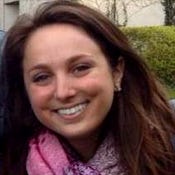Dictation Software Adoption On RiseDictation Software Adoption On Rise
Speech recognition and dictation software could be poised to make big inroads in healthcare, says Healthcare Information and Management Systems Society report.


1 7 Portals Powering Patient Engagement
7 Portals Powering Patient Engagement(click image for larger view and for slideshow)
Speech recognition and dictation software are emerging as top areas for growth potential in healthcare, according to a Healthcare Information and Management Systems Society report.
The influential research nonprofit found that the adoption of speech recognition rose from 21% to 47% from 2009 to 2013. These numbers compared to other types of applications that are at 90% adoption rates show the huge potential for growth across the market.
Growing adoption rates combined with speech recognition's relatively low market penetration level suggest large growth potential for those types of technologies.
"Speech recognition would be more widely adopted if vendors can ensure accuracy and convince physicians that it's going to be a time saver and won't adversely affect workflow," said Jennifer Horowitz, senior director of research at HIMSS.
The growth potential is closely related to the rollout of electronic health records, which many health professionals say decrease productivity.
"With more adoption of EHR systems, there's more interest from providers and hospital CIOs using recognition and dictation tools because they're challenged with productivity issues," said Juergen Fritsch, chief scientist at MModal, a speech recognition and clinical documentation technology company. "The structured templates of EHRs slow productivity. Speech recognition tools allow them to get around dealing with the computer and dropdown menus."
The trend toward accountable care is also driving adoption rates and growth potential. About 60% of all clinical data is unstructured, Fritsch said. With natural language processing technology, unstructured data becomes accessible, allowing for an entirely untapped data set to become available.
"Anyone can use a dictation device," Fritsch said. "It's as simple as pushing a button and speaking."
The report also found room for growth in security applications. About 73% of hospitals have firewalls, 69% have spam and spyware applications, and 62% have encryption applications.
"There's robust growth potential for single sign-on technology," Horowitz said.
Read more about:
2013About the Author
You May Also Like






